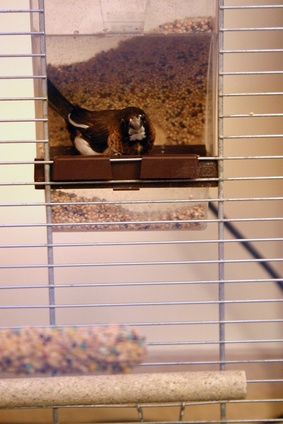
Candling is a method of checking an eggs fertility. Natural fertility is never 100%, in fact if you have bought shipped eggs for hatching the fertility rate is likely to be nearer to 50%, as even the best shipping method will have damaged some of the eggs. Otherwise if they are eggs from your own hens or ones that have never been shipped then you may expect up to an 80% success rate.
You will need to check your eggs for fertility when artificially incubating using an incubator. Infertile or bad eggs should be discarded so that there is no risk of them going bad and exploding inside the incubator, which would contaminate the other eggs.
Making a Candler
Candling gets its name from the days when people used candles as their light source, of course these days you can buy or make your own candler using a light bulb as the light source. The easiest way to make your own candler is to place a light bulb (low energy light bulbs are best as you can get a very bright bulb, but without the heat of a conventional one) and light fixture inside a cardboard box. Cut a small, round hole in the top of the box, just big enough to sit the pointed end of your egg into. Place your egg into this hole and turn the light on.
Candling does not damage the embryos inside the eggs as long as you don't heat them up too much with the heat from the candling device.
Candling
It is easiest to see development of the embryo after a week. The most critical period in the incubation process is the first week so if you do decide to candle your eggs before a week then be very careful with them and do not overheat them.
You should be able to see what is inside the egg and with practice you will be able to identify fertile eggs by the spider-like blood veins spreading out , bad eggs, (may have blood rings and will be cloudy) where the embryo started to develop but later died and infertile eggs that are clear except for the shadow of the yolk.
Dark brown eggs
Dark coloured shells are more difficult to see through, so you will need a brighter light. Even with a brighter light you may need to leave the egg longer until the embryo is potentially bigger and hope that you don't in the meantime have any eggs that go bad and explode.
 How to Kill Mites in Caged Birds
How to Kill Mites in Caged Birds
How t
How to Kill Mites in Caged Birds
How to Kill Mites in Caged Birds
How t
 Homemade Indoor Bird Cages
Homemade Indoor Bird Cages
Homemade In
Homemade Indoor Bird Cages
Homemade Indoor Bird Cages
Homemade In
 How to Remove Bird Droppings
How to Remove Bird Droppings
How to Re
How to Remove Bird Droppings
How to Remove Bird Droppings
How to Re
 Pet Varieties That Dont Drop
Aside from serious behavioral problems, such as aggression,
Pet Varieties That Dont Drop
Aside from serious behavioral problems, such as aggression,
 Uncovering Swift Plans For Alligator
Alligators include the most dangerous with the exotic pets.
Uncovering Swift Plans For Alligator
Alligators include the most dangerous with the exotic pets.
Copyright © 2005-2016 Pet Information All Rights Reserved
Contact us: www162date@outlook.com